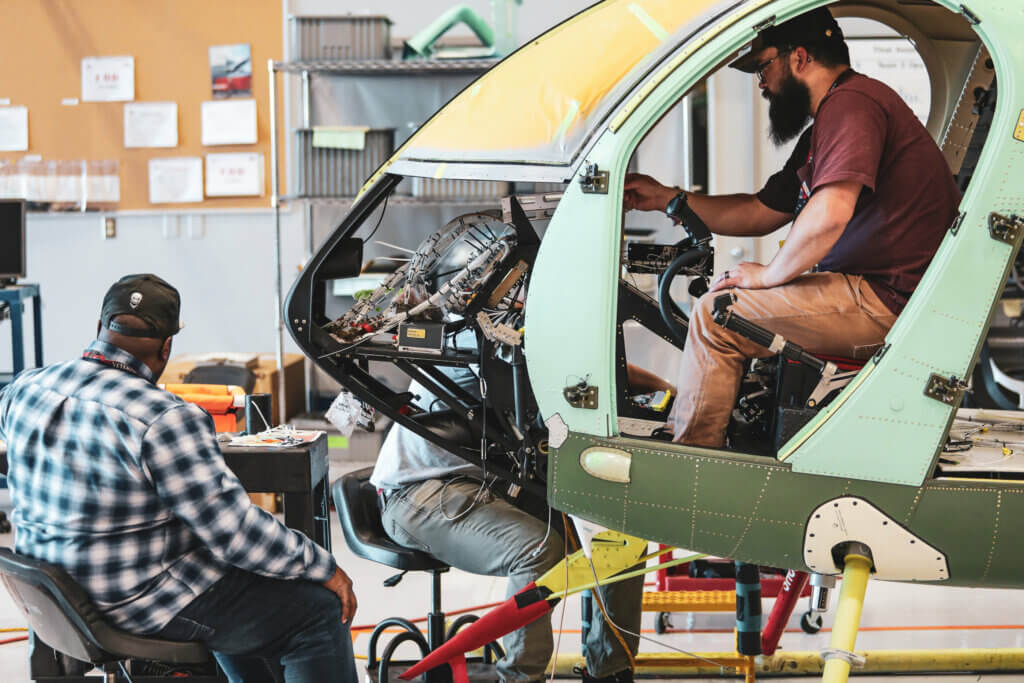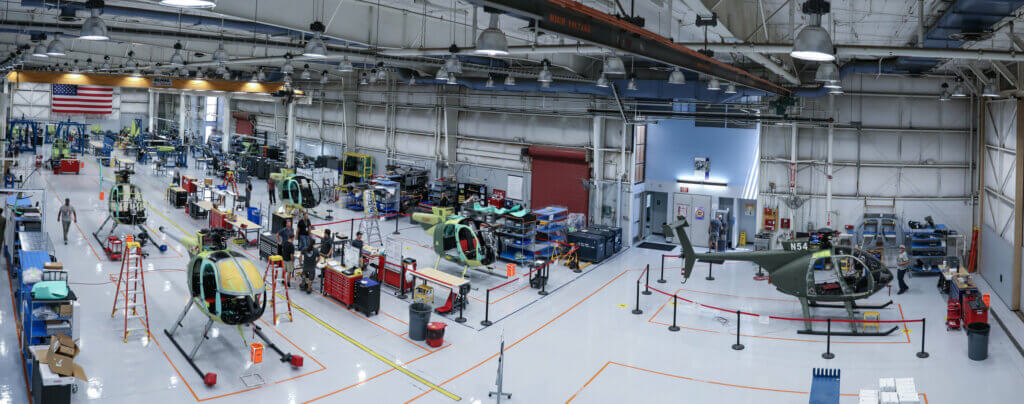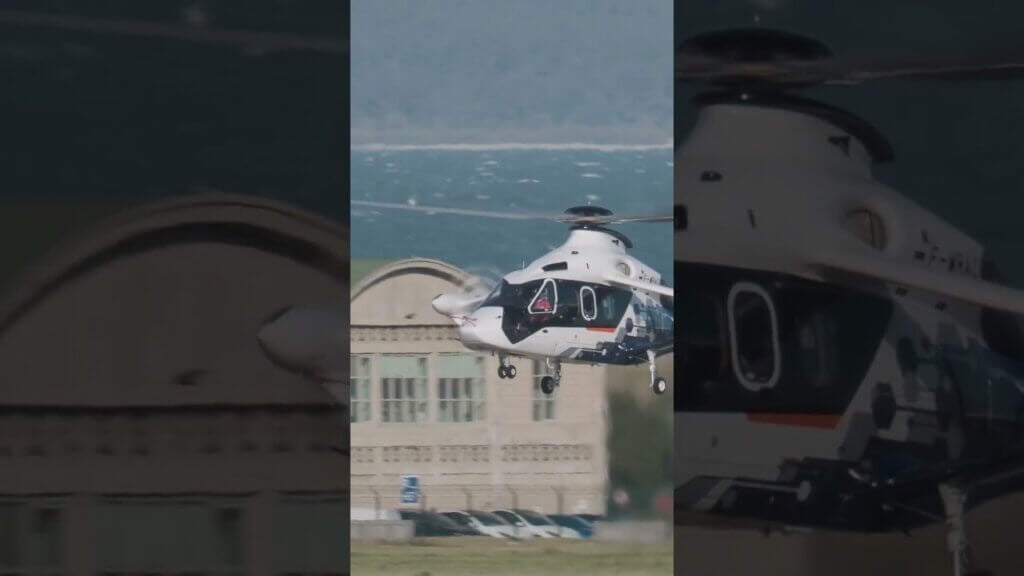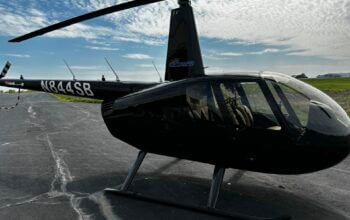
Just over a year after MD Helicopters emerged from bankruptcy with new ownership and a new leadership group, the company is celebrating the progress it has made in customer support and a healthy backlog of orders for new aircraft.
The Mesa, Arizona-based manufacturer left bankruptcy on Aug. 15, 2022, but that process was merely the last act of “15 to 25 years of turmoil” at MD, the company’s president, Brad Pedersen, told media during a virtual press conference.
“The biggest goal was to stabilize the company and profitably grow it,” he said. “The biggest weakness we had was, I think, our customer support [for] our commercial customers. We didn’t pay a lot of attention to keeping those guys flying.”
Over the last year, the company has booked over 20 new aircraft — both military and commercial — and is now looking at an order backlog that account for most of next year’s production.
“We do have some white tails that we’re building that we’re trying to keep open, so customers who come in and need a helicopter in four to six months . . . we have that opportunity,” said Pedersen.

The “conservative” target for 2024 is 22 aircraft produced — and that allows some room for expansion, Pedersen said.
“The board has given me an objective to figure out how we get to [ultimately] delivering 50 aircraft a year,” he added.
This represents quite a leap from 2022’s figure of five deliveries, said Ryan Weeks, VP of aftermarket sales and services at MD. The aftermarket growth has been similarly impressive, he said, up “significantly more” than 50 percent this year over last.
“When we got here roughly a year ago, everybody said ‘Well, one of your big problems is you don’t have spare parts, you don’t have repairs readily available,’ ” said Weeks. The company then identified the roughly 1,000 most-requested parts, which represent about 90 percent of customer demand — and has made a multimillion-dollar investment to improve their supply.
A year ago, MD had enough inventory to ship about 45 percent of those part numbers with 24 hours. Today, it has increased its stocks enough to cover about 77 percent of them.
While availability is clearly improving, the wider supply chain crisis within the aerospace industry means MD will not meet its target of having those 1,000 parts immediately available until later next year.

Another change in customer support has seen the creation of an exchange pool, allowing customers to swap out components requiring overhaul for a reconditioned part.
The process of ordering and managing customer needs is being automated, allowing customers to track their orders and to ensure “nothing falls through the cracks” said Pedersen.
Six of MD’s 40 service centers now comprise a “service center council” that meets with the company once a quarter to talk about the manufacturer’s pressing issues and the service centers’ pressing needs.
“The purpose of that council is to use them as a sounding board on behalf of the entire network to make us better collectively,” said Weeks.
The company’s leadership group has been active in visiting customers around the world.
“If you want to change things, if you want to improve the relationship [with customers], you have to understand what the customers are going through — and we want to do whatever we need to do to help [them],” said Pedersen.
Harvey Ticlo recently joined the company as its new chief operating officer, and has been working with suppliers to create long-term agreements and help with production planning. Ticlo, a licensed A&P mechanic, has extensive leadership experience in aerospace and manufacturing, most recently serving as general manager of Bonded Logic.
“We’ve been doing a lot of reviews of our internal processes and procedures,” said Ticlo. “As everybody knows, the supply chain is continuing to be challenging, with shortages of materials and manpower. So we’re giving our suppliers longer visibility with our forecast . . . to make sure that our supply chain is robust for the next few years ahead.”
In terms of product improvements, MD has launched several partnerships with various companies to develop supplemental type certificates (STCs).
The MD 500E to F model upgrade is now able to be performed through a technical bulletin by service centers — previously aircraft would need to be shipped to Mesa.
A crashworthy auxiliary fuel tank is also in the last stages of certification, said Pedersen.
MD’s focus is very much on the 500 series, and while it plans to continue supporting the NOTAR-equipped 520 N and 600, it has no plans to return either of those types to production.
Pedersen said the company was “still looking at options” for the 902 line. “Personally, I’d like to see it back in production someway, somehow — but it’s a very large investment,” he said. “We’ll probably have an announcement somewhere in the next 30 days on what’s going to happen with the 902 line.”
Since the new ownership group took over, MD has hired 163 new employees, with a retention rate of about 98 percent. Pedersen compared that 2022, when MD hired 150 people, but 150 also left the company.
Pedersen attributed this to the uncertainty and instability at the company prior to the bankruptcy, as well as the change in management style.
“The previous management team probably didn’t listen to employees as well as the current one does,” he said. “I think we’re more collaborative and we listen to the people here. We get their advice, we want their advice and we’re building a path to the future with being more inclusive and getting other people involved in it.”
Pedersen added that the industry could expect to hear “a pretty aggressive investment plan in product development” from MD at HAI Heli-Expo next February.
Separately, the company announced that it was part of a delegation that travelled to Ukraine to explore partnership and production opportunities in the country.
“We are deeply committed to Ukraine’s safety and security,” said Jason Lindauer, MD’s VP of sales and marketing. “Our advanced light attack scout helicopters would safeguard both military and civilian personnel as they enter and exit the battlefield.”
He added that the company was looking to establish a “comprehensive ecosystem, involving training and maintenance programs,” managed by Ukrainians.
“This holistic approach ensures the sustained success of our products within the country, contributing significantly to Ukraine’s defense capabilities.”









